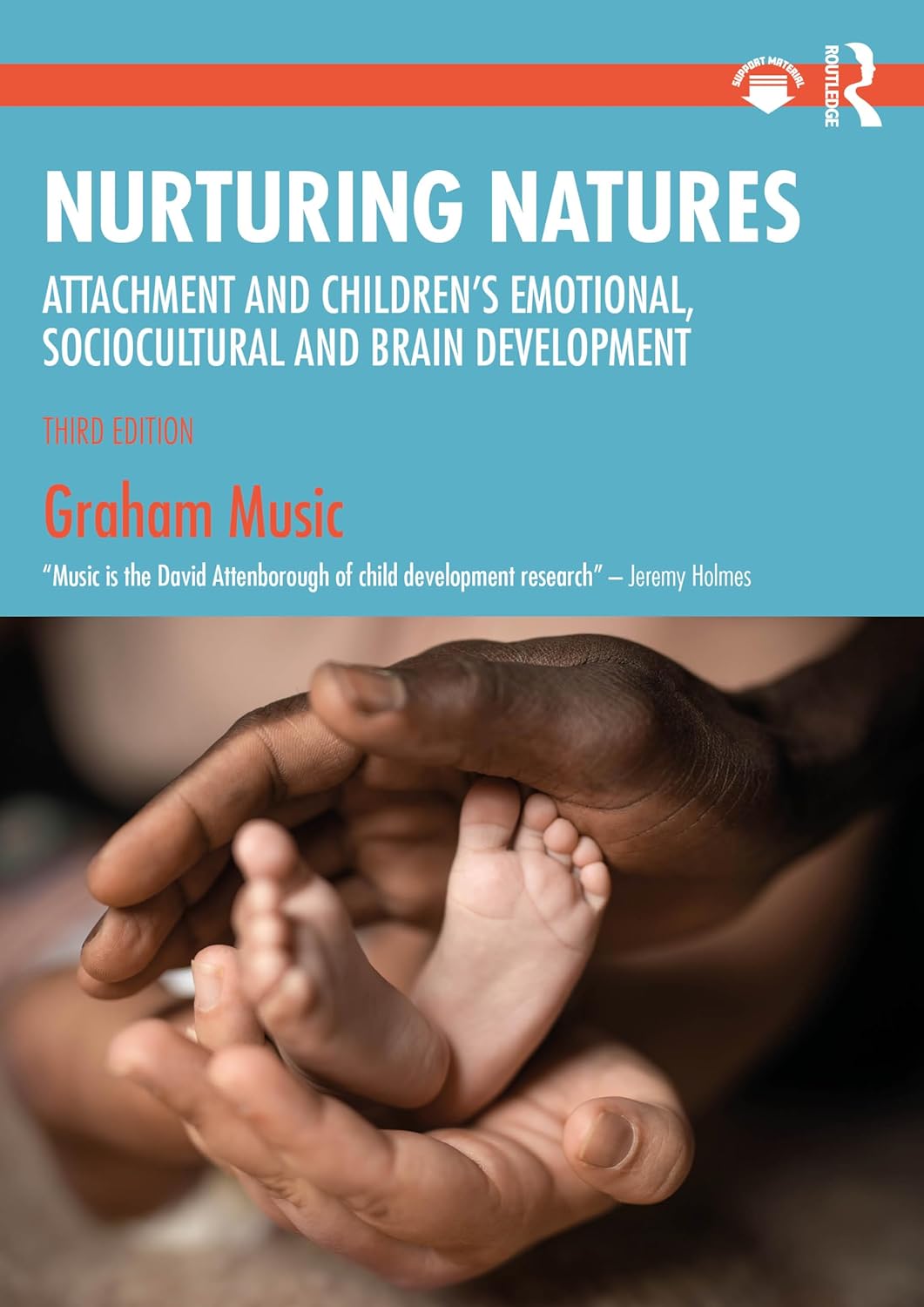Nurturing Natures: Attachment and Children's Emotional, Sociocultural and Brain Development

Book Details
- Publisher : Routledge
- Published : 2024
- Cover : Paperback
- Pages : 474
- Category :
Child and Adolescent Studies - Category 2 :
Attachment Theory - Catalogue No : 97707
- ISBN 13 : 9781032436272
- ISBN 10 : 1032436271
Table of Contents
Acknowledgements
Introduction: The Blind Men and The Elephant
- Nature and Nurture
- Multiple Perspectives
- Un-Nurtured and Feral Children
- The Chapters
PART I - BEGINNINGS OF EMOTIONAL AND SOCIAL DEVELOPMENT
1. Life Begins: From Conception to Birth
- Observing The Unborn Baby
- Where Does Parental Influence Start? The Meeting of Biology and Psychology
- Lasting Effects, Social Effects
- Being Born
- Key Points
2. Born to Relate
- Immaturity
- Bonding: Humans Are Not Grey-Lag Geese
- Wired To Relate
- Infant Imitation and Contingency
- Attunement, Affect Regulation, and Marking
- Maternal Instinct Questioned: Abandonment and Infanticide
- Entrainment, Culture, and Becoming One of Us
- Key Points
3. Infant Coping Mechanisms, Mismatches, and Repairs in Relating
- It Takes Two to Tango: Blind Babies, Premature Babies, and Sensitive Babies
- Early Emotional Defences
- Mismatches and Dodges
- The Effect of Maternal Depression and Other Mental Health Problems
- Key Points
4. Empathy, Self, and Other Minds
- Early Precursors of Understanding Other Minds
- Developmental Leaps from Nine Months and Onwards
- Theory of Mind
- Mirror Neurons and Rizzolati’s Monkeys
- Exceptions: Neglected, Maltreated and Autistic Children
- Key Points
PART II - OVERARCHING BODIES OF IDEAS
5. Attachment
- Attachment Theory’s Second Phase: Ainsworth the Strange Situation Test, Crittenden’s Dynamic Maturational Model
- Attachment Inside Us
- Transmission of Attachment
- Attachment Theory and Culture
- Attachment and Disorders
- Key Points
6. Culture
- Some Differences
- Sociocentric and Egocentric, Dyads and Groups
- What Is Universal and Biologically Natural? Breastfeeding and Emotions
- Cultural Variations in Development
- Cultures Frame Our Thoughts and Very Physiology and Brains
- Key Points
7. Biology and The Brain
- Neuroplasticity
- Brain Areas
- Brains, Nervous Systems and Bodies
- Empathy, Maltreatment and Our Cerebral Hemispheres
- Hope Or Hopeless
8. Epigenetics, Evolution and How Nature Meets Nurture
- Epigenetics and Evolution
- Nurturing Nature in Action
- Orchids and Dandelions
- Sins of the Fathers and Lamarck
- How Our Genes Affect Others
- Gene Environment Interaction and Caution
- Key Points
PART III - DEVELOPMENTAL CAPACITIES AND STAGES
9. Language, Words, and Symbols
- Parentese and Infant-Directed Speech
- Culture and Language
- Intersubjectivity and Language Learning
- Language and Brains
- Language and Emotional Processing
- Language Ability and Social Advantage
- Key Points
10. Memories: Learning Who We Are and What to Expect
- The Brain as Predictor of The Future
- Memories of Events and Facts
- Episodic and Autobiographical Memory
- Trauma, Memories, and Forgetting
- Key Points
11. Play: Fun, Symbolising, Practising, and Mucking About
- Early Play
- Play In Other Species and Rough and Tumble
- Different Kinds of Play, Different Kinds of Learning
- Play As a Window Into The Psyche
- Play, Pretending, Symbolism, and Growing Minds
- Key Points
12. Issues of Gender
- Social Learning
- Different Cultures, Different Genders
- Biological Differences and Rare Conditions
- A Weaker Sex? Gender and The Impact of Early Experiences
- Venus and Mars: Language and Different Planets
- Preferred Cultures, Different Gender Preferences, and Beliefs
- Different Genders, Different Psychological Presentations
- Testosterone Again, and Other Hormones
- Key Points
PART IV - NOT JUST MOTHERS
13. Nonmaternal Care and Childcare
- Adoption Is Common in Some Societies
- Purchased Nonmaternal Childcare: Nurseries
- Nurseries, Nannies, Grannies, and Childminders
- Summary
14. Middle Childhood, Siblings, Peers and Group Life
- Middle Childhood
- Siblings and Earlier Interactions
- Switch Points: Parents Peers and Attachment
- Power of The Group
- Peers: Are They Most Important?
- Temperament
- Key Points
15. The Place of Fathers
- Biological Priming
- Children With a Father and a Mother
- Children With No Biological Father Present: Single Mothers, Lesbian Parents, and Step-Fathers
- Practical Lessons from Research on Fathers
- Key Points
16. Moving Towards Adulthood
- The Adolescent Brain
- Screens, The Connected World and Other Addictions
- Becoming Less Attached
- Sex and Romance
- Risks, Problems, and Resilience
- Key Points
PART V - CONSEQUENCES OF EARLY EXPERIENCES
17. Trauma, Neglect, and Their Effects
- Neglect
- Maltreatment, Trauma, and Abuse
- Long-Term Effects
- Disorganised Attachment
- Summary
18. Resilience and Good Feelings
- Positive Emotions and Health
- Optimism Is Natural In Children
- Resilience
- Ambivalence and Emotional Complexity
- Happiness: Eudaimonic and Hedonistic
- Resilience, Interventions and Proximal and Distal Impacts
- Summary
19. Moral Development, Antisocial and Prosocial Behaviour
- Early Moral Capacities
- Empathy, Kindness, Compassion
- Hot Aggression
- Cold Aggression
- Summary
20. Conclusions: Earlier Experience and Its Longer-Term Consequences
- Psychological Effects of Early Experiences
- Adverse Experiences and The Body
- Childhood Trauma and The Lack of Good Experiences
- What Change Is Possible?
- Conclusions
Glossary
References

